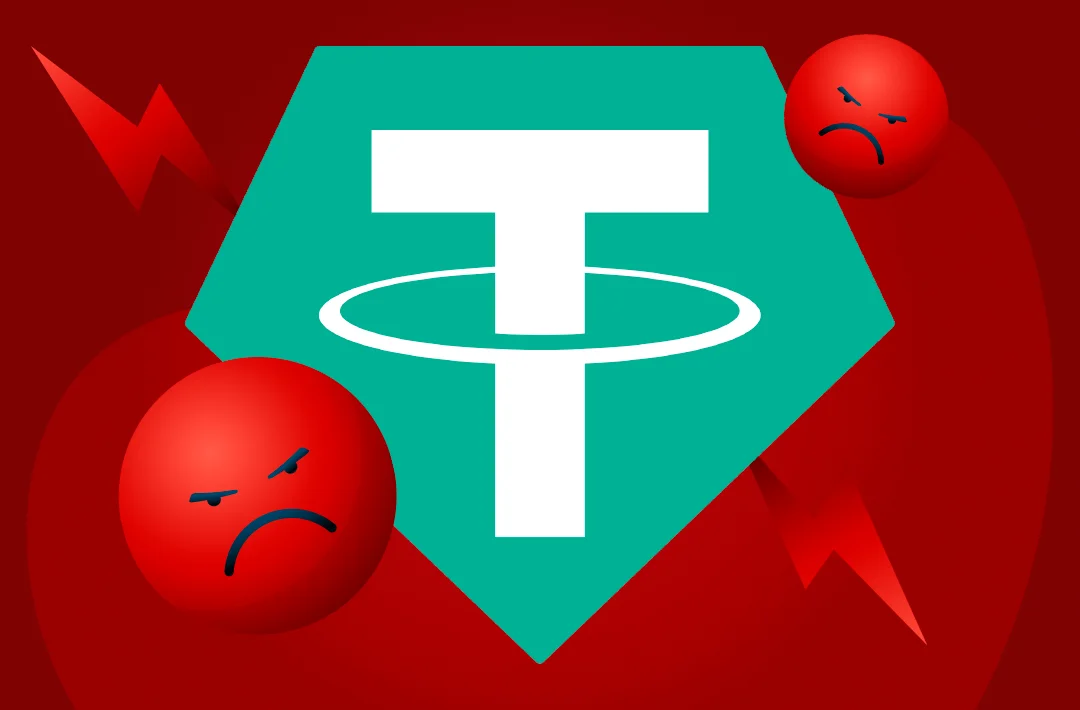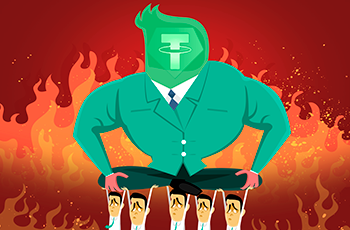Consumers’ Research compared the USDT issuer to the FTX exchange for its lack of transparency
The NPO recalled that the company, despite numerous promises, never published a report on the stablecoin’s reserves

13.09.2024 - 09:30
143
4 min
0
Last updated on Nov 17, 2024
What’s new? Consumers’ Research, an American consumer advocacy NPO, in a new report has pointed out the lack of transparency of dollar reserves of the USDT stablecoin from the issuer Tether. Experts noted that the company, despite numerous promises, has yet to audit USDT’s collateral with an independent reputable accounting firm.
What else is known? USDT is the largest centralized dollar-pegged stablecoin, it ranks third in the overall ranking of cryptocurrencies by market capitalization at $118,3 billion, behind only bitcoin and Ethereum. USDT accounts for about 70% of the total stablecoin supply. In the first half of 2024, Tether’s profits reached a record $5,2 billion.
Consumers’ Research argues that Tether’s lack of transparency is similar to the situation that led to the collapse of crypto exchange FTX and related hedge fund Alameda Research in November 2022. These companies went bankrupt as a result of a multi-billion dollar fraud by top management. FTX founder Sam Bankman-Fried was sentenced to 25 years in prison this year; his former colleagues will go on trial this fall.
Consumers’ Research, in addition to publishing the report, sent open letters to the governors of all US states where it also raised concerns about Tether. In addition, it ran a radio alert and published it on a separate website.
The report concludes by stating that Tether does business with unscrupulous market participants and is unable to prevent USDT from being used to circumvent sanctions.

Tether will double its headcount to comply with regulatory requirements
One of the largest companies in the crypto industry now employs about a hundred people
In January, Howard Lutnick, CEO of Cantor Fitzgerald, which manages Tether’s US portfolio, assured the public of USDT reserves, “From what we’ve seen, and we did a lot of work, they have the money they say they have.”
In May, Tether, together with Chainalysis analysts, began monitoring the USDT secondary market to prevent illegal transactions. In July, Tether hired former Chainalysis chief economist Philip Gradwell to increase transparency and prepare reports on USDT usage that will be available to US regulators and investors.
In August, Tether CEO Paolo Ardoino announced that since 2014, the firm has assisted more than 145 law enforcement agencies in recovering $108,8 million in USDT related to illegal activity.
In September, Tether announced the launch of its T3 financial crime unit in collaboration with TRM Labs analysts and the team at TRON, which is the largest USDT trading blockchain.

Deutsche Bank says there are risks of Tether’s monopoly on the stablecoin market
The USDT issuer responded by saying that the report lacked sufficient data to support such claims
TRM Labs previously reported that 1,6% of USDT volume was linked to criminal activity in 2023.
Late last year, S&P Global experts analyzed the eight largest stablecoins in the crypto market and ultimately gave USDT a score of 4 out of 5, where 5 is the lowest score.
Useful material?
Trends
As of January 21, the capitalization of this sector of the crypto market exceeds $519 billion
Jan 21, 2025
Market
The platform generated $9,5 million in revenue during the same time
Jan 20, 2025
Market
Shares of the Trust are designed to track the market price of XRP with fewer fees and expenses
Jan 17, 2025
Market
The asset will allow USDT to move seamlessly between different blockchains
Jan 17, 2025
Market
Earlier, the community criticized the project for its lack of transparency, which led to a sharp drop in the HYPE token price
Jan 8, 2025
Market
Rising US Treasury bond yields are negatively affecting risk assets
Jan 8, 2025









 Telegram
Telegram  Twitter
Twitter